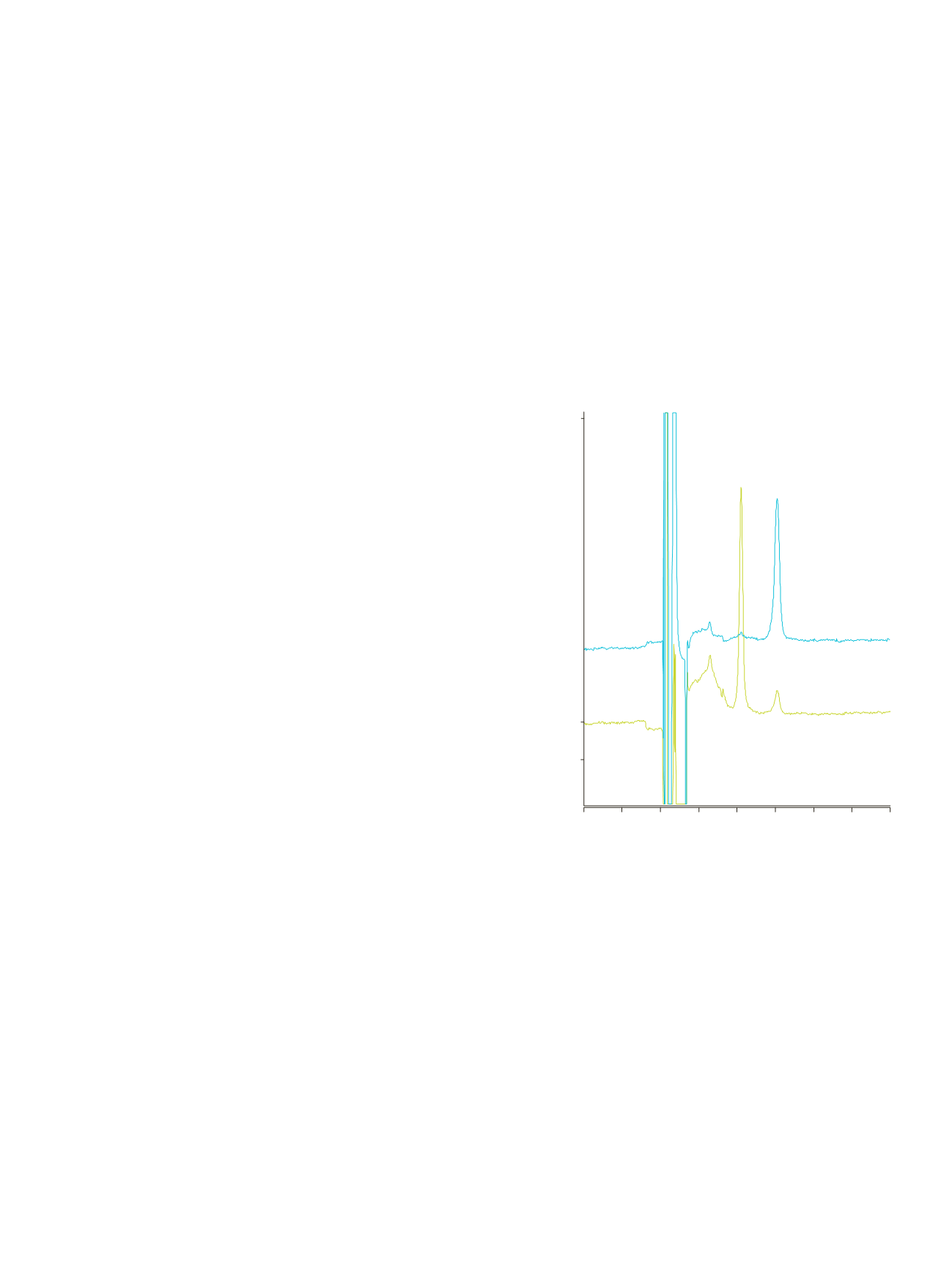

Optimization of On-Line SPE Conditions
To develop this on-line SPE method, an Acclaim
Mixed-Mode WCX-1 Guard and an Acclaim Trinity P1
Guard—both of which have been reported as on-line SPE
cartridges for the determination of paraquat and diquat
in drinking and environmental waters—were evaluated
following the typical on-line SPE flow schematic shown
in Figure 3.
5
Although either of these products can be
used as an SPE cartridge for the enrichment of paraquat
and diquat, the Acclaim Trinity P1 Guard cartridge was
selected due to the easier elution of paraquat and diquat
using an acetonitrile and 100 mM ammonium acetate
(pH 5.0) mobile phase—the same as that used for the
separation on the Acclaim Trinity Q1 Analytical column.
Optimization of Separation Conditions
The Acclaim Trinity Q1 column is designed for applica-
tions using volatile buffers such as ammonium acetate,
which are compatible with MS, charged aerosol, and UV
(>225 nm) detections.
6
The separation can be optimized
by adjusting the mobile phase buffer concentration,
buffer pH value, and organic solvent content.
The ammonium acetate buffer was effective for this
application, and its concentration affected retention of
both diquat and paraquat. Higher buffer concentration
shortened retention times, and 100 mM was selected for
the rapid analysis. Buffer pH value has significant effect
on the resolution of diquat and paraquat. It has been
reported that pH 5 ± 0.5 is a suitable pH range for this
application;
6
therefore, pH 5.0 was used. Mobile phase
organic solvent content affects retention and resolution of
both diquat and paraquat. Experiments showed that with
100 mM ammonium acetate, mobile phases containing
55–75% acetonitrile gave excellent resolution and
sufficient retention times. Therefore, 65% acetonitrile was
used in this application.
Figure 4 illustrates rapid baseline separation of paraquat
and diquat following on-line SPE under the specified
chromatographic conditions. The entire chromatographic
analysis is completed within 7 min.
Figure 4. Chromatograms of a paraquat and diquat standard (1.0 µg/L each)
following on-line SPE.
For On-Line SPE
Column:
Acclaim Trinity P1, 3 µm, Guard Cartridges (3.0 × 10 mm)
with V-2 Holder
Mobile Phase: A: 100 mM Ammonium Acetate (pH 5.0)
B: Acetonitrile
C: H
2
O
Gradient:
0–2 min, 10% A, 5% B
2.1–4.5 min, 55% A, 45% B
4.6–10 min, 10% A, 5% B
Flow Rate:
0.7 mL/min
Inj. Volume:
1000 µL onto the on-line SPE cartridge
For Separation
Column:
Acclaim Trinity Q1, 3 µm, Analytical (3.0 × 50 mm)
Mobile Phase: 35% 100 mM Ammonium Acetate (pH 5.0)/65% Acetonitrile
Flow Rate:
0.5 mL/min
Temperature:
30 °C
Detection:
UV absorbance at 260 nm for paraquat and 310 nm for diquat
Valve Position: 0 min, 1_2
2.0 min, 6_1
4.5 min, 1_2
Samples:
(a) Absorbance at 260 nm
(b) Absorbance at 310 nm
Peaks: 1. Paraquat
2. Diquat
0.00
1.25
2.50
3.75
5.00
6.25
7.50
8.75 10.00
-0.25
0.00
2.00
mAU
Minutes
1
2
a
b
4



















